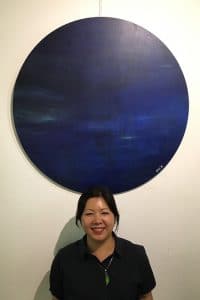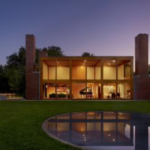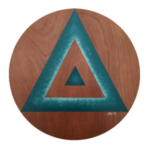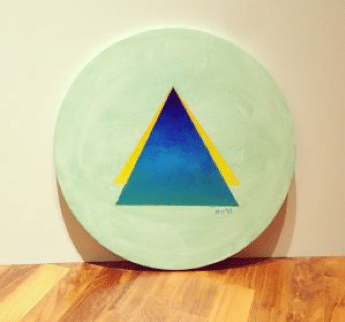3 Minutes with Jau Goh

Born in Malacca, Malaysia in 1980, Jau Goh graduated from the Architecture School in the University of Western Australia in 2004. Currently living and working in Singapore, Jau creates an entirely personal universe in her paintings by following a precise framework of formal techniques, filled with visual fields of lines and color with the intention of depicting contrasts between control and abandonment.
With a strong purpose to transform materials into art while converting energy into ever changing forms, Jau has the ability to foster a platitude of worlds filled with lasting moments of geometric exercises. Each physical stroke and motion revolves around precise layouts with pure shapes and forms, produced by techniques ranging from the simplicity of pencil drawings to layered acrylic offerings.
1) Growing up, were you always interested in art?
I took children art classes in primary school and I remember considering going to Nanyang Girls School for Art Elective Programme however that did not materialise because I picked my other love Er Hu and went to Dunman High to join the Chinese Orchestra there.
2) What were some of the earliest influences and motivations which inspired you to become an artist?
When I was in architecture school, the units I enjoyed most were Art & Architecture History and Documentation Technical Resolution (DTR). DTR requires one to pick a Master Architect’s work (I picked Esherick House by Louis Kahn) and analyse it for its geometric design principles and apply to an old project and update it accordingly. It instilled a really deep appreciation for proportion, geometry, integrity of material etc. I was also deeply moved by Cubism, Constructivism and Monet’s paintings. So did these inspire me to become an artist? Not at the time, the end game was to graduate and become an architect.

3) Your art works engage such a distinct aesthetic, often instilling a sense of calm, do you have a particular source of inspiration?
In early 2011, I went to a mandala art therapy class. What I learnt during the class was that the very nature of creating a mandala is therapeutic and symbolic. The shapes and colours you create in your mandala will reflect your inner self at the time of creation as though creating a self-portrait. I learnt to let my instinct and feeling guide me through the process of creation.

4) As an architect by training, the management of space, lines and light must be such important factors, do you see these traits as significant influences on your paintings?
As mentioned above, my architecture training formed my aesthetics. I am often told that my compositions are very architecturally structured. Quality of light and how it sets off the texture and surfaces of materials is inherent in my thought processes when I paint.
Since young I’ve always dreamt of going to art school (I even know which school I want to go to!) and recently I’ve been looking for ways to create more awareness for my artworks. This year has been extremely rewarding and full of surprises. I’m happy with where things are now, being able to balance my time (and wallet!) with my full time job and my weekend art pursuit.
5) What is your work process? Do you begin through sketches or is the process more fluid?
I have different processes for different mediums. For my colour pencil and watercolour works, the process is more fluid. I draw whatever is in my mind’s eye. Currently I work mainly with acrylics and I find myself having to plan ahead more when I am using this medium i.e. selection of the ground, is it paper, canvas or timber? Lots of preparation goes into a piece before the actual painting. So yes for my acrylic works, I almost always have sketches for them. Sometimes in the middle of the night, I have to jump up and sketch something before I lose the image.
I have different processes for different mediums. For my colour pencil and watercolour works, the process is more fluid. I draw whatever is in my mind’s eye. Currently I work mainly with acrylics and I find myself having to plan ahead more when I am using this medium i.e. selection of the ground, is it paper, canvas or timber? Lots of preparation goes into a piece before the actual painting. So yes for my acrylic works, I almost always have sketches for them. Sometimes in the middle of the night, I have to jump up and sketch something before I lose the image.
6) What do you consider the most indispensable item in your creative process from imagination to creation?
Headspace. One has to declutter one’s mind in order to let creative thoughts come through.
7) Which was the first artwork you ever created, and which you ever sold?
I was a hobbyist for a while and I daren’t call myself an artist until more recently. The first piece I ever sold was this piece of mandala art in October 2013. It was untitled but I remember feeling the sense of Freedom when I painted it. It now adorns the nursery of my friend’s son.

8) Which living artist do you find most inspiring? Why?
Carmen Herrera. She is 101 and still painting. She persevered despite being ignored 3/4 of her life. I want to be like her and to keep painting to my very last breath. And those geometric designs and colours. I could look upon them all day.
